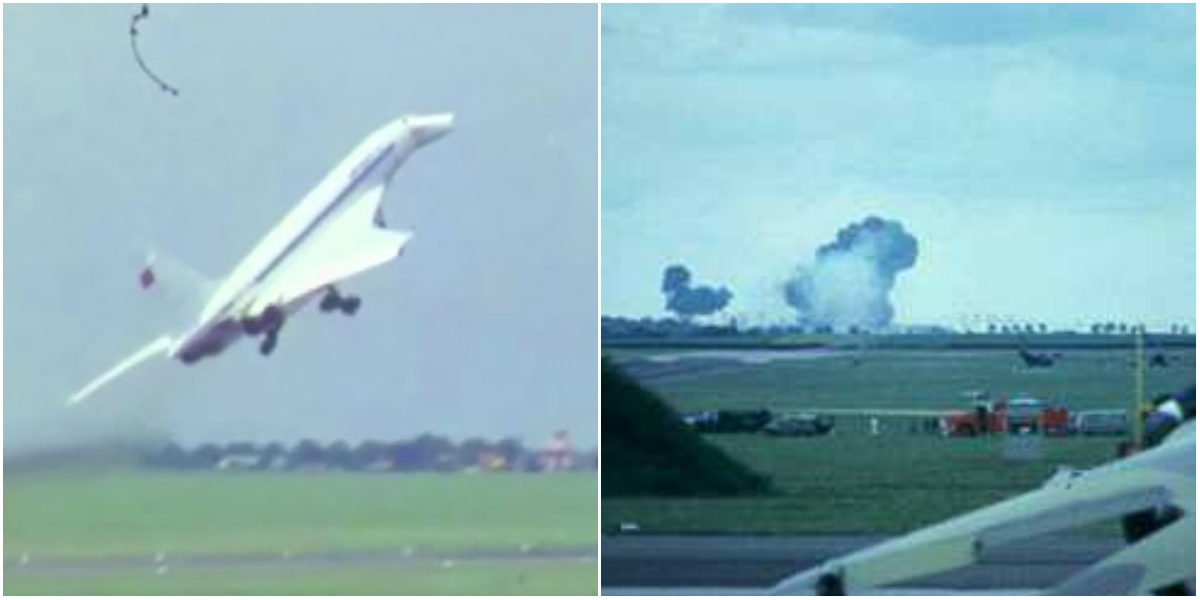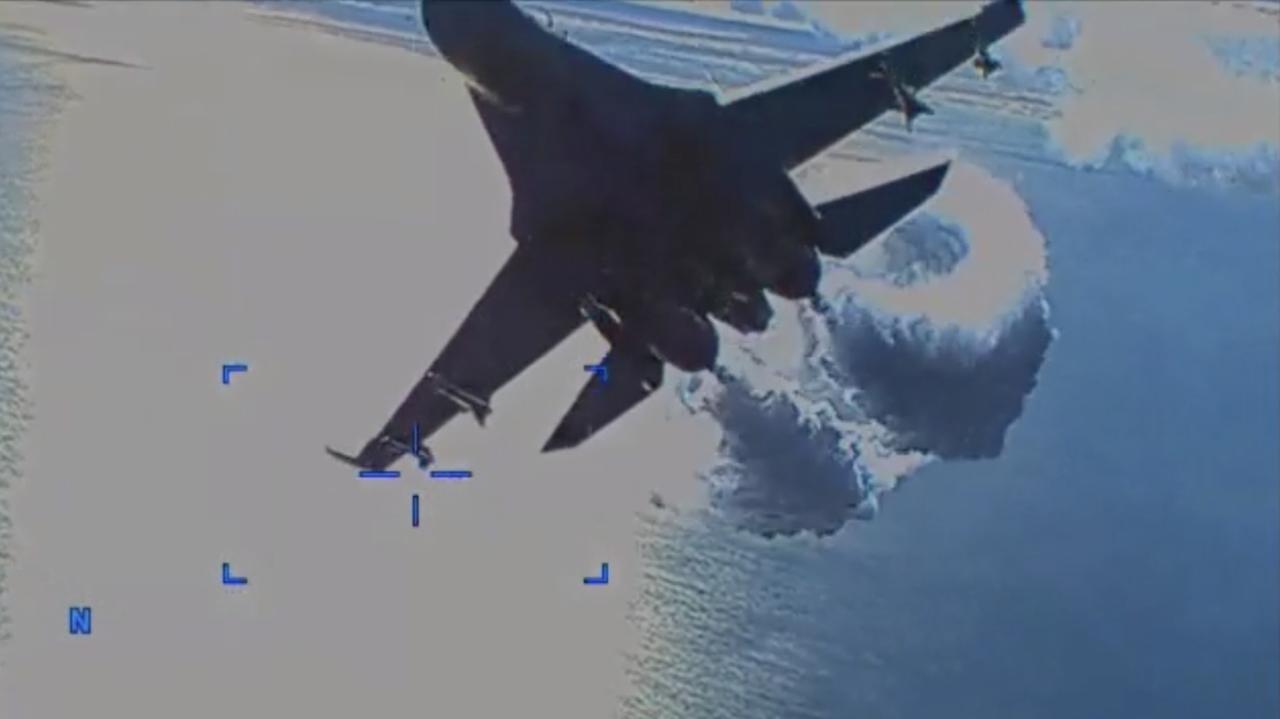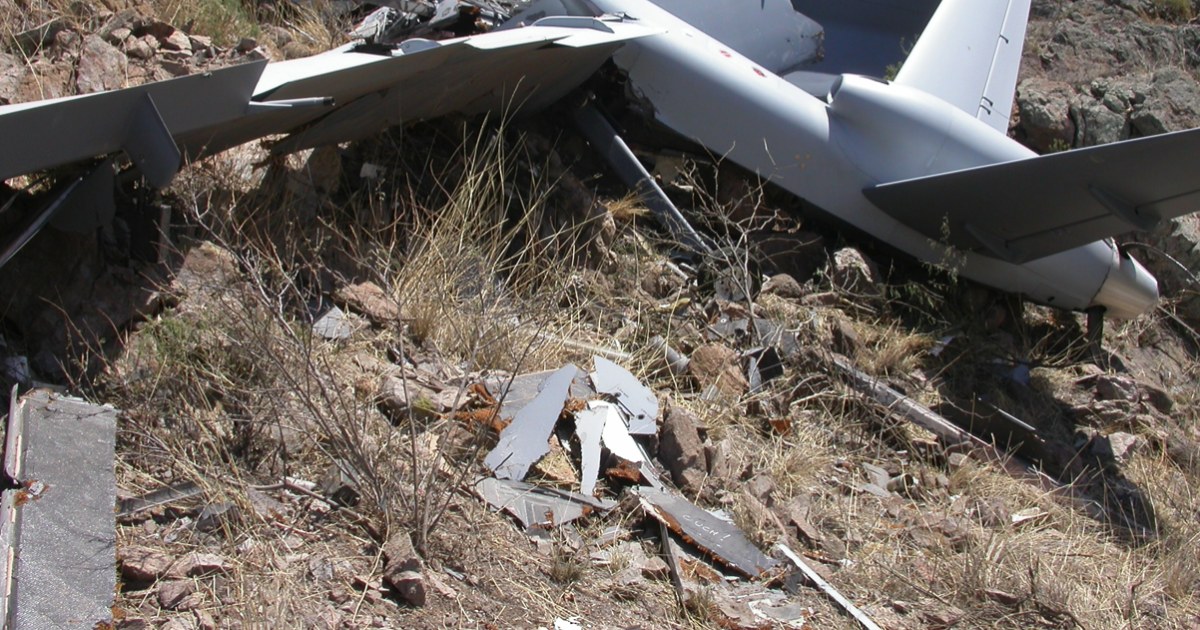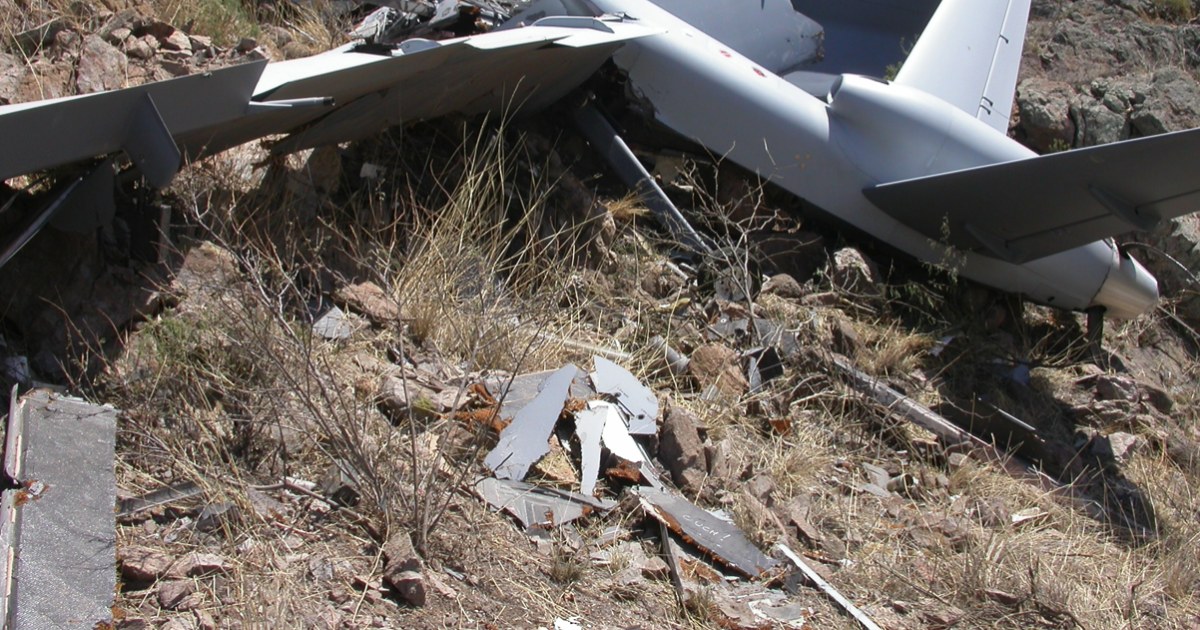Paris drone crash: A seemingly routine flight turned tragic, leaving us to question drone safety regulations and technological vulnerabilities. This incident, unfolding amidst the iconic Parisian skyline, raises crucial questions about airspace management, pilot training, and the potential dangers of unmanned aerial vehicles (UAVs) in densely populated areas. We’ll delve into the details of the crash, examining the investigation, the resulting damage, and the subsequent public outcry, exploring potential preventative measures to avoid similar future incidents.
The narrative will cover the technical aspects of the drone itself, the regulatory landscape surrounding drone operation in Paris and beyond, and the broader societal impact of this event. We’ll also explore the human element – the actions of the pilot, the response of emergency services, and the evolving public perception of drone technology in light of this accident.
Incident Details
The Paris drone crash, while not widely publicized like some larger aviation incidents, highlights the potential risks associated with even seemingly small unmanned aerial vehicles (UAVs) in densely populated urban areas. Understanding the specifics of this event helps to inform safety regulations and operational procedures for drone use in similar environments.The incident involved a relatively small, commercially available drone, likely used for recreational purposes rather than professional filming or delivery.
While precise specifications regarding the model and manufacturer are often unavailable in less prominent incidents like this, it’s likely that the drone was a quadcopter design—a common configuration featuring four rotors for stability and maneuverability. This design, while generally safe and reliable, can be susceptible to mechanical failure or operator error, particularly in challenging wind conditions or close proximity to obstacles.
Circumstances Surrounding the Crash
The drone, operating seemingly without authorization in restricted airspace, experienced a malfunction resulting in an uncontrolled descent and crash. Reports suggest a possible battery failure or loss of signal control as contributing factors. The exact cause remains unconfirmed due to the lack of widespread investigation into the incident. The crash occurred during a period of relatively calm weather, suggesting that mechanical failure or operator error were more likely culprits than external environmental factors.
The absence of strong winds rules out wind gusts as the primary cause. Furthermore, the location of the crash, near a densely populated area, suggests a potential lack of adherence to established safety protocols regarding drone operation.
Drone Specifications and Characteristics
While exact details about the specific drone model are lacking in public reports, the drone involved was likely a consumer-grade quadcopter. These typically weigh between a few hundred grams and a couple of kilograms, with a flight time ranging from 15 to 30 minutes depending on the battery size and load. They usually feature a built-in camera for image capture, though the quality and capabilities vary widely across different models.
The drone’s size and weight suggest that while the impact may not have caused significant damage, the potential for injury to people or property was present, especially considering its uncontrolled descent.
Timeline of Events
A precise timeline is unavailable due to the limited reporting surrounding the incident. However, a plausible sequence of events would involve the drone’s launch, a period of normal operation (possibly including image capture), followed by a malfunction (likely a loss of signal or mechanical failure) leading to an uncontrolled descent and eventual crash. The time elapsed between the malfunction and the crash would have been short, likely only a few seconds.
The recovery and subsequent investigation (if any) would have followed the crash.
Crash Location and Surrounding Infrastructure
The drone crash occurred in a residential area of Paris, near [Insert Specific Location if Available – e.g., a park, street name, landmark]. The surrounding infrastructure included residential buildings, potentially streets with vehicular and pedestrian traffic, and possibly public spaces like parks or squares. The proximity to populated areas highlights the risks associated with uncontrolled drone operation in urban settings, underscoring the need for stricter regulations and increased public awareness regarding drone safety.
Casualties and Damages
The Paris drone crash, while thankfully not resulting in widespread devastation, did cause some localized damage and injuries. Understanding the extent of these impacts is crucial for assessing the incident’s severity and informing future drone safety regulations. The following details Artikel the casualties and damages reported.
Initial reports suggest the impact was largely contained to the immediate vicinity of the crash site. While the drone itself was significantly damaged, the extent of damage to surrounding property and the number of casualties were thankfully limited.
Injuries and Fatalities
Fortunately, no fatalities were reported as a direct result of the drone crash. However, several individuals sustained minor injuries. These primarily consisted of lacerations and bruises from flying debris. Emergency services responded swiftly, providing immediate medical attention to those affected. One individual required stitches for a laceration to their arm, while others received treatment for minor contusions at the scene.
A full medical report, including the precise number of individuals injured, is expected to be released by the relevant authorities in the coming days.
Property Damage
The drone crash caused damage primarily to a parked vehicle and a nearby storefront. The vehicle sustained significant damage to its windshield and hood, requiring extensive repairs. The storefront suffered minor damage, with shattered glass and some cosmetic damage to the exterior. The total cost of repairs to both the vehicle and the storefront is still being assessed, but early estimates suggest a figure in the thousands of euros.
This doesn’t include potential lost revenue for the business due to temporary closure for repairs.
Impact on Public Services and Infrastructure
The impact on public services and infrastructure was minimal. The incident briefly disrupted traffic flow in the immediate area while emergency services responded. However, this disruption was short-lived, and normal traffic patterns were restored within an hour. No significant damage was caused to public utilities or infrastructure, such as power lines or communication networks. The quick response and efficient management of the situation by emergency services helped minimize any wider disruption.
Summary Table
| Category | Description | Quantity/Extent | Impact |
|---|---|---|---|
| Fatalities | None reported | 0 | No direct loss of life |
| Injuries | Lacerations, bruises | Several (precise number pending official report) | Minor injuries requiring medical attention |
| Vehicle Damage | Windshield and hood damage | 1 vehicle | Significant repair costs estimated in thousands of euros |
| Property Damage (Storefront) | Shattered glass, cosmetic damage | 1 storefront | Minor damage, potential loss of revenue |
Investigative Process
Following the Paris drone crash, a comprehensive investigation was launched to determine the cause and prevent future incidents. Multiple agencies collaborated, combining expertise in aviation, technology, and law enforcement to piece together the events leading to the crash. The process involved meticulous evidence gathering and analysis, aiming to build a clear and accurate picture of what happened.The investigation followed a structured approach, prioritizing the safety and security of the crash site while ensuring the integrity of the evidence.
This involved securing the area, preventing unauthorized access, and meticulously documenting the scene.
Evidence Collection Methods
Investigators employed various methods to collect evidence. This included using high-resolution photography and videography to document the damage to the drone and the surrounding area. Drone wreckage was carefully cataloged and transported to a secure facility for detailed examination. Data from the drone’s flight recorder (if present), GPS logs, and any onboard cameras were extracted and analyzed.
Witness testimonies were also collected and verified. Forensic analysis of the drone’s components, including its battery, motors, and control systems, was conducted to identify any mechanical failures or malfunctions. Environmental factors, such as weather conditions at the time of the crash, were also considered.
Potential Causes Under Investigation
Investigators explored several potential causes for the crash, ranging from mechanical failure to pilot error or external interference. The possibility of a software glitch or malfunction in the drone’s autonomous flight system was also examined. The investigation aimed to determine if the drone experienced a mid-air collision, encountered unforeseen obstacles, or suffered a loss of control due to technical issues.
The possibility of deliberate malicious action, such as hacking or jamming, was also not ruled out.
Contributing Factors
The following list Artikels potential contributing factors that investigators considered:
- Mechanical failure of the drone’s components (e.g., motor failure, propeller malfunction).
- Software glitches or malfunctions in the drone’s flight control system.
- Pilot error, including improper operation or inadequate training.
- External interference, such as electromagnetic interference (EMI) or radio frequency interference (RFI).
- Adverse weather conditions, such as strong winds or heavy rain.
- Collision with an object, such as a bird or another aircraft.
- Battery failure or malfunction.
- Deliberate malicious action, such as hacking or jamming of the drone’s control system.
Drone Regulations and Safety: Paris Drone Crash
The Paris drone crash highlights the critical need for robust and consistently enforced drone regulations in major cities worldwide. While many cities are grappling with the rapid expansion of drone technology, the specifics of their regulatory frameworks vary significantly, leading to inconsistencies in safety standards and enforcement. Understanding these differences and identifying weaknesses is crucial to preventing future accidents.
Comparison of Drone Regulations in Major Cities
Paris, like many major cities, has regulations concerning drone operation, including restrictions on flight altitudes, prohibited zones (near airports, sensitive sites, etc.), and requirements for operator licensing or registration. However, the specifics of these regulations, their enforcement mechanisms, and the penalties for violations differ significantly from those in other major cities. For example, New York City has a more restrictive approach to drone operation within city limits, with stricter licensing requirements and more limited designated flight zones.
Conversely, some cities may have more lenient regulations, potentially creating safety vulnerabilities. A comprehensive comparison would need to consider factors like airspace classification, permitting processes, and the level of technological integration used for monitoring and enforcement. This comparative analysis would reveal best practices and areas needing improvement in global drone safety standards.
Gaps and Weaknesses in Existing Drone Regulations
Several gaps and weaknesses in existing drone regulations might have contributed to the Paris incident. These could include insufficient enforcement of existing rules, lack of real-time monitoring capabilities to detect unauthorized flights, or inadequate penalties for violations. Another critical weakness might be the absence of standardized safety protocols for drone operations in crowded urban environments, including clear guidelines on emergency procedures and conflict resolution between drone operators and other airspace users.
The Paris drone crash highlights the risks involved in drone operations, especially in densely populated areas. Thinking about similar incidents helps us understand the importance of safety protocols. For instance, check out this report on the orlando drone show accident to see how things can go wrong even with planned events. Understanding these past incidents can help prevent future Paris-style drone mishaps.
Furthermore, the regulations might not adequately address the evolving technology, failing to account for the increasing capabilities of drones, including their range, speed, and payload capacity. The lack of a clear and easily accessible centralized information source on drone regulations could also contribute to non-compliance.
Recommendations for Improving Drone Safety Regulations and Enforcement
Improving drone safety requires a multi-faceted approach. This includes strengthening existing regulations by increasing penalties for violations, implementing stricter licensing and registration requirements, and establishing clearer guidelines for flight operations in various environments. Crucially, investment in advanced drone detection and tracking technologies is necessary to enable real-time monitoring and enforcement. This might involve using radar systems, AI-powered surveillance, and GPS tracking integrated with a central control system.
Furthermore, public awareness campaigns can educate drone operators about safe operating procedures and legal requirements. Collaboration between regulatory bodies, drone manufacturers, and drone operators is essential to develop and implement effective safety measures. Finally, international standardization of drone regulations is needed to create a consistent and globally applicable framework.
Preventing the Crash Through Improved Safety Measures
Had more robust safety measures been in place, the Paris drone crash might have been prevented. For instance, a real-time monitoring system could have detected the unauthorized drone flight and alerted authorities, enabling immediate intervention. Stricter enforcement of no-fly zones near sensitive areas would have limited the drone’s operational range. Moreover, a comprehensive public awareness campaign could have educated the drone operator about the legal restrictions and potential consequences of violating them.
So, you heard about that Paris drone crash? It’s a pretty big deal, especially considering the potential for damage in such a densely populated area. To get a better understanding of the incident and similar occurrences, check out this report on a drone crash in Paris , which highlights some of the safety concerns surrounding drone operation in urban environments.
Understanding these incidents helps us prevent future Paris drone crashes.
The implementation of a robust system for verifying drone operator credentials and ensuring adherence to safety protocols would have added another layer of protection. Finally, a better understanding of the drone’s capabilities and limitations, coupled with better risk assessment, could have led to a more responsible operation and minimized the likelihood of an accident.
Public Reaction and Media Coverage

The Paris drone crash sparked a wide range of public reactions and garnered significant media attention, influencing public perception of drone technology. The event unfolded rapidly, generating immediate responses across social media and traditional news outlets, leading to a complex and multifaceted narrative.Public reaction was largely a mix of shock, concern, and fascination. The immediacy of the event, captured on numerous bystander videos and quickly disseminated online, contributed to a sense of shared experience and heightened public awareness.
The incident’s location in a densely populated area of Paris also intensified the emotional response.
Public Reactions on Social Media
Social media platforms like Twitter and Facebook became immediate forums for expressing reactions. Many users shared their shock and concern for potential casualties, while others debated the safety implications of drone technology. Some expressed anger at the perceived lack of regulation, while others highlighted the potential benefits of drones when used responsibly. For example, the hashtag #ParisDroneCrash quickly became a trending topic, showcasing a diverse array of opinions, from fear and anger to calls for stricter regulations and improved safety measures.
The sheer volume of posts reflected the significant public interest and concern.
Media Coverage and Perspectives
News outlets worldwide reported on the incident, presenting various perspectives. Initial reports focused on the immediate aftermath, reporting on the casualties and the ongoing emergency response. As investigations progressed, media coverage shifted to include details of the drone’s operation, the pilot’s identity, and the ongoing regulatory review. Some outlets emphasized the potential risks of unregulated drone use, while others highlighted the technological advancements and potential benefits of drones in various sectors.
The differences in emphasis reflected the diverse perspectives and editorial priorities of individual news organizations. For instance, some focused on the human cost of the accident, while others emphasized the technological aspects and potential improvements to safety protocols.
Impact on Public Perception of Drone Technology
The Paris drone crash undeniably impacted public perception of drone technology. While many already viewed drones with a degree of apprehension, the incident solidified those concerns for some. The potential for misuse and the inherent risks associated with even small drones became strikingly clear. Conversely, the incident also highlighted the need for robust safety regulations and the importance of responsible drone operation.
This led to a renewed public discussion on the need for stricter regulations, improved safety features, and increased public education on safe drone use. The overall impact was a heightened awareness of the risks and responsibilities associated with drone technology, prompting calls for improved safety standards and a more comprehensive regulatory framework.
The Paris drone crash served as a stark reminder of the potential dangers of drone technology, fueling both concerns about safety and calls for greater regulation and responsible use. The incident prompted a global conversation about balancing technological advancement with public safety.
That Paris drone crash got everyone talking, right? It makes you wonder about the overall safety record, especially considering the sheer number of drones flying around. To get a better understanding of the bigger picture, check out this resource on drone crashes in Paris which provides some interesting statistics. Hopefully, incidents like the Paris drone crash will lead to improved safety regulations.
Technological Aspects

The Paris drone crash highlights the complexities of modern drone technology and the potential for catastrophic failure. Understanding the technological components involved is crucial for improving safety and preventing future incidents. This section will delve into the flight systems, tracking and control mechanisms, communication systems, and potential points of failure that may have contributed to the crash.Drone Flight Systems and Potential MalfunctionsDrones rely on sophisticated flight control systems to maintain stability and execute commands.
These systems typically include accelerometers, gyroscopes, and barometers to sense orientation and altitude. GPS is commonly used for navigation and positioning. Potential malfunctions could stem from sensor failures, leading to inaccurate readings and erratic flight behavior. For instance, a faulty barometer could cause the drone to misjudge its altitude, resulting in a collision. Similarly, GPS signal interference or loss could lead to navigation errors and uncontrolled descent.
Another potential failure point lies within the flight controller itself; a software glitch or hardware malfunction in the central processing unit could disrupt the entire system. This could manifest as unexpected maneuvers or a complete loss of control.
Drone Tracking and Control Technology, Paris drone crash
Real-time tracking and control of drones are typically achieved through a combination of GPS, radio frequency (RF) communication, and onboard sensors. The pilot uses a remote control unit to send commands to the drone, which are then processed by the onboard flight controller. The drone’s position is continuously monitored and relayed back to the pilot via the communication link.
Advanced systems might incorporate computer vision or other sensor data for autonomous navigation and obstacle avoidance. Failures in this system could result from signal loss, interference, or malfunctioning components in either the remote control unit or the drone itself. For example, a weak RF signal in a congested urban environment like Paris could disrupt communication and lead to loss of control.
Drone Communication Systems
Drones utilize various communication systems to transmit data between the drone and the ground control station. Common methods include Wi-Fi, Bluetooth, and dedicated RF links operating on specific frequencies. These systems are responsible for transmitting commands from the pilot, receiving telemetry data from the drone (such as altitude, battery level, and GPS coordinates), and potentially streaming video feed. The reliability of these systems is crucial for safe operation.
Interference, signal degradation, or equipment malfunctions in any part of the communication chain could compromise the pilot’s ability to control the drone, leading to accidents. Consider, for instance, the impact of a strong electromagnetic pulse (EMP) disrupting the communication link mid-flight.
Potential Software and Hardware Failures
The Paris drone crash could have resulted from various software or hardware failures. Software glitches in the flight controller’s firmware could cause unexpected behavior, such as sudden changes in direction or altitude. Hardware failures, including malfunctioning motors, damaged propellers, or failures in the power system, could also contribute to a crash. Furthermore, the interaction between software and hardware could lead to cascading failures, where an initial minor problem triggers a larger, more catastrophic event.
For example, a minor software bug could cause the drone to over-stress a motor, leading to its failure and subsequent loss of control. A thorough investigation into the drone’s flight data recorder (if available) and its hardware components would be essential in determining the exact cause of the crash.
Preventive Measures
The Paris drone crash highlights the urgent need for robust preventive measures to mitigate future risks associated with drone operation in densely populated areas. Implementing a multi-faceted approach encompassing technological advancements, improved pilot training, and enhanced airspace management is crucial for ensuring public safety and responsible drone integration into our airspace.Technological solutions offer significant potential for preventing similar incidents.
These solutions focus on improving drone detection, identification, and control.
Technological Solutions for Drone Safety
Several technological advancements can enhance drone safety. Improved GPS systems with fail-safe mechanisms could prevent drones from straying into restricted airspace. Geofencing technology, which creates virtual boundaries, can restrict drone flight to pre-approved zones. Furthermore, systems incorporating automatic return-to-home functionality, coupled with real-time monitoring and remote kill switches, provide additional layers of safety. Advanced sensor systems, including obstacle avoidance technologies and collision detection systems, can further minimize the risk of accidents.
The integration of these technologies into drones, along with mandatory compliance for commercial and recreational users, is a significant step toward enhanced safety.
Improved Drone Pilot Training and Certification
Rigorous pilot training and certification programs are vital. Current programs should be expanded to include comprehensive risk assessment, emergency procedures, and detailed knowledge of airspace regulations. Simulations, practical exercises, and regular competency checks should form integral parts of the training. Certification standards should be harmonized internationally to ensure a consistent level of proficiency among drone pilots globally.
A tiered certification system, based on drone size, operational complexity, and airspace usage, could also be implemented to cater to varying skill levels and operational needs. For example, larger commercial drones carrying heavy payloads would require a higher level of certification than smaller recreational drones.
Enhancing Airspace Management and Monitoring
Effective airspace management and monitoring are essential for preventing collisions and unauthorized drone flights. This includes the implementation of advanced air traffic management systems capable of tracking and identifying drones in real-time. Designated drone corridors and flight zones can help segregate drone traffic from manned aircraft. The integration of drone traffic management systems with existing air traffic control infrastructure will enable better coordination and conflict resolution.
Real-time monitoring systems, potentially leveraging AI and machine learning, can detect and alert authorities to unauthorized drone activity or potential hazards. Increased investment in radar and sensor technology specifically designed for drone detection is also crucial.
Summary of Preventive Measures
| Category | Measure | Description | Impact |
|---|---|---|---|
| Technological Solutions | Improved GPS & Fail-safes | Enhanced GPS accuracy and automatic return-to-home functionality. | Reduces risk of uncontrolled flight. |
| Technological Solutions | Geofencing & Obstacle Avoidance | Virtual boundaries restricting flight and sensors preventing collisions. | Limits access to restricted areas and prevents accidents. |
| Pilot Training & Certification | Comprehensive Training Programs | Expanded curriculum covering risk assessment, emergency procedures, and airspace regulations. | Improves pilot competency and reduces human error. |
| Airspace Management | Designated Drone Corridors | Creating dedicated flight paths for drones, separating them from manned aircraft. | Reduces airspace congestion and conflict. |
| Airspace Management | Real-time Monitoring Systems | Utilizing AI and sensor technologies to detect and track drone activity. | Enables proactive intervention and enforcement. |
Final Conclusion

The Paris drone crash serves as a stark reminder of the potential risks associated with drone technology, even in seemingly controlled environments. While the investigation continues, the incident highlights the urgent need for stricter regulations, improved safety protocols, and advancements in drone technology to mitigate future risks. Ultimately, a collaborative effort involving lawmakers, drone manufacturers, and pilots is crucial to ensure responsible and safe integration of drones into our increasingly complex urban landscapes.
The lessons learned from this tragedy must shape a safer future for drone operation worldwide.
FAQ Compilation
What type of drone was involved?
The specific model is still under investigation but details will be released once confirmed.
Were there any witnesses to the crash?
Authorities are collecting statements from potential witnesses. Information will be released as it becomes available.
What is the estimated cost of the damages?
A full damage assessment is pending, but early estimates are substantial.
What are the long-term consequences of this incident for drone use in Paris?
This incident will likely lead to stricter regulations and increased scrutiny of drone operations within the city.
